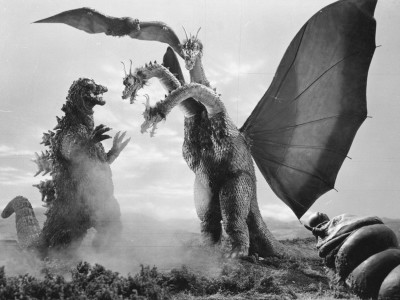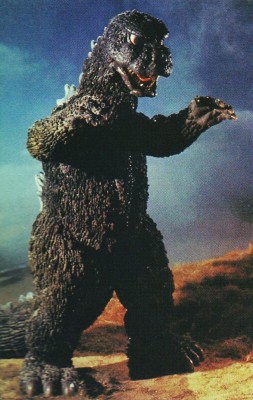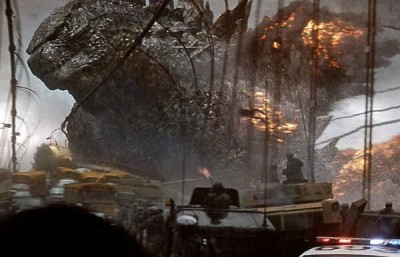“History shows again and again how nature points up the folly of man.” Godzilla, by the Blue Oyster Cult.
Think about this for a second; Godzilla has been with us as long as the music of Elvis has. That first film Godzilla premiered in 1954 and quickly became a Japanese then worldwide phenomena. A whopping 28 sequels followed the original with yet another, again titled Godzilla, that’s currently in theaters.

Back in the mid-1950s the world was a much different place than it is today.
Back then it was just nine years after the cities of Hiroshima and Nagasaki were obliterated by atomic bombs that killed more than 100,000 people and effectively brought an end to the second world war. And in the 1950s it seemed as if the Cold War between the US and the USSR would surly turn to a hot one, with cities all over the globe suffering the same fates of Hiroshima and Nagasaki.
Worst of all the US, Great Britain and the USSR were all trying to perfect these ultimate killing weapons by testing them around the planet in far-off spots on the map. Each of these tests seemed to explode a more powerful bomb than the last making the two used in WWII look weak by comparison. One of these tests in the South Pacific by the US produced an explosion much greater than anticipated which resulted in radioactive fallout raining down on unsuspecting islanders as well as the crew of a Japanese fishing boat operating nearby. Many of the islanders and the crew of the fishing boat were afflicted with radiation poisoning that would eventually kill one of the crewmen.

To all this fallout and fear of a nuclear future would enter the king of the monsters — Godzilla.
Not the first giant monster movie ever released, King Kong beat Godzilla by 21 years, none-the-less Godzilla would set the standards of what we’d come to expect in a giant monster movies after. Namely some sort of mutated creature that’s far more powerful than our puny weapons who loves nothing more than to destroy cities and wreck lives. For examples of movies that pay “homage” to Godzilla in the last few years see Cloverfield (2005), Monsters (2010) or Pacific Rim (2013). Actually, see Monsters but don’t see Cloverfield or Pacific Rim. They’re terrible.
If people had fears about the ramifications of all this nuclear testing going on across the planet in the 1950s, these fears could be explored and exploited on-screen under the guise of a gigantic, reptile-like tank-squashing monster. Created from the very radioactivity these tests released, Godzilla is a force of uncontrollable chaos and destruction who would invariably find its way to shore to deal out a terrible retribution on mankind for daring to play with the atom.
And today the new version of Godzilla is set to explore and exploit fears we have in the 21st century. Though we don’t really fear nuclear weapons anymore* we do have fears unique to our time. Mainly concerns over climate change and super-storms that can be as, if not more, devastating that the nuclear weapons we used to be so concerned about.

And movies like Godzilla allow us to explore fears of wrecked cities and a world inhospitable to us via the relative safety of a movie theater.
After the release of the original Godzilla in ’54 it took about a decade for Godzilla to go from a frightening creature to something more playful and silly. For a good part of the 60s and 70s the big green meanie was more kid’s fare than total terror. If this new version of Godzilla is successful and they keep making more and more Godzilla films, expect to see the return of the “silly” Godzilla that saves cities and hangs out with kids to sometime in 2024.
*Though if reports are correct there are still enough of nuclear weapons stockpiled around the globe to wipe mankind off the map several times over. Think about that the next time you go to bed. Muhahahaha!
